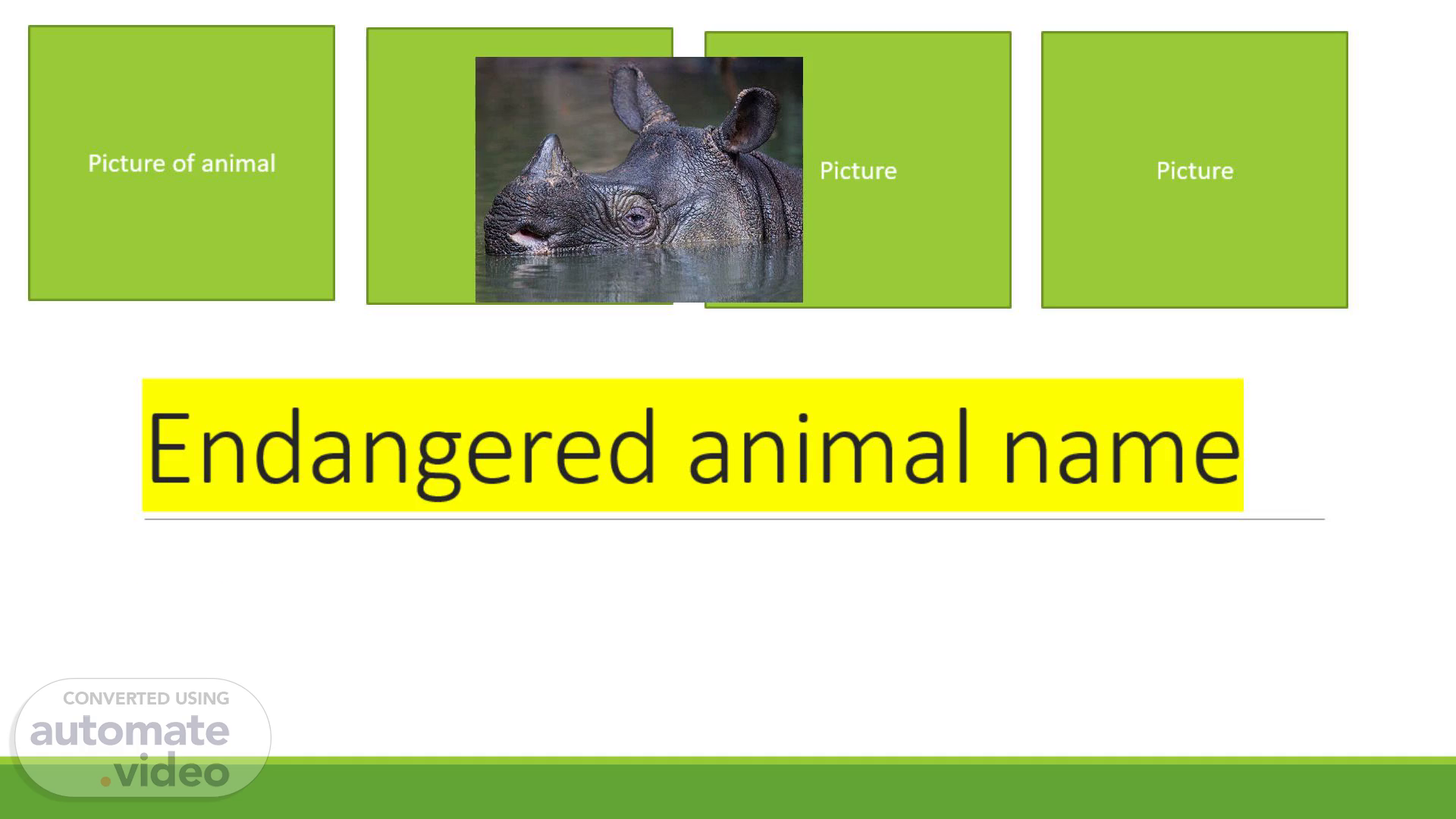
Endangered animal name
Scene 1 (0s)
Endangered animal name. My first name and last name.
Scene 2 (10s)
Claim. Cutting down a forest to use the land for crops or housing is making it hard for animals and plants to survive, and it’s changing how they interact with each other..
Scene 3 (23s)
Habitat of (animal). Where does my animal live? State the location (particular country) where deforestation is occurring to my animal? Include a map of where my animal lives..
Scene 4 (36s)
Deforestation. What is happening to your animals habitat. What type of deforestation is happening?.
Scene 5 (44s)
Classification of (animal). Animals scientific name: How is my organism classified (Linnean classification)..
Scene 6 (54s)
Taxonomy of ( animal). Kingdom: Phylum: Class: Order: Family: Genus: Species: Explain how/why each level is classified for your animal..
Scene 7 (1m 5s)
Food web of ( animal). Food web for my animal.
Scene 8 (1m 13s)
Food web. Identify multiple flow on effects in the food web you have constructed. ( What would happen if your animal becomes extinct to the other organisms in your food web).
Scene 9 (1m 24s)
Deforestation. How deforestation impacts your chosen species. Present data and evidence that shows how deforestation is currently affecting your chosen organism. Predict the effects of environmental change on organisms is your chosen location.
Scene 10 (1m 37s)
Human Impacts. Describe how human actions can change the relationships between these animals and predict how it might affect the balance of nature.
Scene 11 (1m 47s)
Conclusion. Summarise your thoughts on the impact of deforestation in your chosen place and endangered animal. Identified evidence to support your conclusions. Construct arguments to explain whether deforestation is affecting your animal Made a conclusion for or against the initial claim..
Scene 12 (2m 1s)
• Although humansßre clearing native trees alid habitats of the common ringtail species appears to be surviving. • This is because it has been able to adapt to suburban environments, changing where it lives and what it eats in order to survive. • However, not all animals are as adaptable as the ringtail possum and other, more vulnerable species are Under threat and the ringtail possum faces new threats (such as traffic). • Further, the long-term Impacts of the ringtail's behaviour changes is not clear, particularly given its role as a plant pollinator. Overall, it is clear that deforestation does impact animals' behaviour and how they interact with each other, leven for resilient species like the common ringtail possum..
Scene 13 (2m 31s)
References. Harvard Referencing.